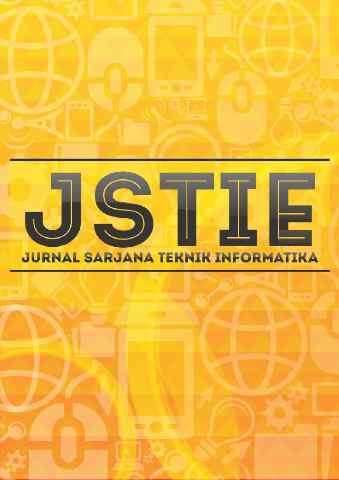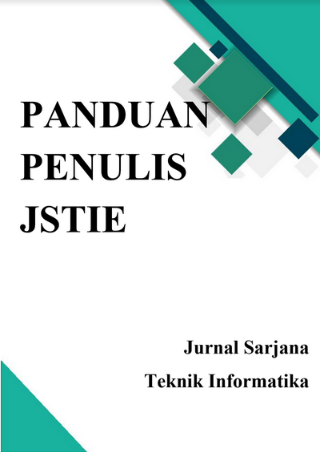Analisis Forensik pada Web Phishing Menggunakan Metode National Institute Of Standards And Technology (NIST)
DOI:
https://doi.org/10.12928/jstie.v8i2.16697Keywords:
Cybercrime, Fake Login, Forensic Digital, Phishing, WiresharkAbstract
Komunikasi dan informasi menjadi kebutuhan yang sangat penting dan dapat menimbulkan masalah pada teknologi itu sendiri. Bentuk kejahatan cybercrime dengan teknik phishing, phiser memanipulasi link atau URL yang sengaja dilakukan untuk mendapatkan informasi penting dari seseorang atau kelompok. Teknik tersebut dengan menyisipkan script atau memanipulasi website dengan protocols HTTPS (Hypertext Transfer Protocol Secure) pada website yang digunakan oleh phiser. Hal tersebut untuk menarik perhatian korban mengakses URL atau situs yang phiser sebarkan melalui email. Maraknya pencurian account berbasis web phishing yang digunakan phiser atau pelaku dengan tujuan mengambil data yang sensitive pada account korban seperti username dan password. Penggunaan metode National Institute of Standards and Technology (NIST) bertujuan untuk menganalisis proses investigasi atau forensik digital kasus cybercrime dan memunculkan barang bukti digital. Tahapan analisis berupa Collection, Examination, Analysis dan Reporting. Penggunaan tools wireshark untuk mencari barang bukti dan tools hashcalc untuk mengakuisisi barang bukti yang didapatkan. Hasil barang bukti digital tersebut dapat digunakan untuk proses penyelidikan mengungkap kejahatan digital. Penelitian ini menganalisis serangan web phishing oleh phiser menggunakan fitur fake login dan didapatkan file capture wireshark dari web phishing dengan protocols HTTPS serta hasil analisis dari pendekripsian pada keamanan yang terdapat pada protocols HTTPS berupa URL phishing, DNS (Domain Name System) yang digunakan oleh pelaku, IP address server, IP address destination, identitas penyerang dan email dari informasi tindak kejahatan yang dilakukan phiser untuk mendapatkan account valid milik korbannya.References
D. Andika, “Kejahatan Teknologi Informasi (Cybercrime),†2017. [Online]. Available: https://www.it-jurnal.com/kejahatan-teknologi-informasi-cybercrime/.
A. Ginanjar, N. Widiyasono, and R. Gunawan, “Web Phising Attack Analysis on E-Commerce Service Using Network Forensic Process Method,†J. Terap. Teknol. Inf., vol. 2, no. 2, pp. 59–69, 2019.
B. Raharjo, “Sekilas mengenai forensik digital,†J. Sosioteknologi, pp. 384–387, 2013.
S. M. Wisnu Budi , Aan Widayat Kusban, Muhammad, “Analisis Computer Forensic Untuk Mendukung Proses Penyelidikan Dalam Kasus Kejahatan,†p. 12, 2015.
Hakim, “Pengertian Website Menurut Para Ahli | TipsSerbaSerbi.†p. PENDIDIKAN, 2004.
A. A. Zabar and F. Novianto, “Keamanan Http Dan Https Berbasis Web Menggunakan Sistem Operasi Kali Linux,†J. Ilm. Komput. dan Inform., vol. 69, no. 2, pp. 2089–9033, 2015.
G. Liu, B. Qiu, and L. Wenyin, “Automatic detection of phishing target from phishing webpage,†in Proceedings - International Conference on Pattern Recognition, 2010, no. August 2010, pp. 4153–4156.
National Institute Of Standards And Technology U.S Departement of Commerce, “Cybersecurity | NIST,†2019. [Online]. Available: https://www.nist.gov/topics/cybersecurity. [Accessed: 22-May-2019].
Downloads
Published
Issue
Section
License
License and Copyright Agreement
In submitting the manuscript to the journal, the authors certify that:
- They are authorized by their co-authors to enter into these arrangements.
- The work described has not been formally published before, except in the form of an abstract or as part of a published lecture, review, thesis, or overlay journal. Please also carefully read Journal Posting Your Article Policy.
- The work is not under consideration for publication elsewhere.
- The work has been approved by all the author(s) and by the responsible authorities – tacitly or explicitly – of the institutes where the work has been carried out.
- They secure the right to reproduce any material that has already been published or copyrighted elsewhere.
- They agree to the following license and copyright agreement.
Copyright
Authors who publish with Jurnal Sarjana Teknik Informatika agree to the following terms:
- Authors retain copyright and grant the journal right of first publication with the work simultaneously licensed under a Creative Commons Attribution License (CC BY-SA 4.0) that allows others to share the work with an acknowledgement of the work's authorship and initial publication in this journal.
- Authors are able to enter into separate, additional contractual arrangements for the non-exclusive distribution of the journal's published version of the work (e.g., post it to an institutional repository or publish it in a book), with an acknowledgement of its initial publication in this journal.
- Authors are permitted and encouraged to post their work online (e.g., in institutional repositories or on their website) prior to and during the submission process, as it can lead to productive exchanges, as well as earlier and greater citation of published work.








